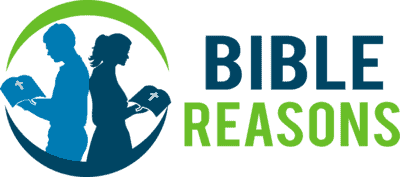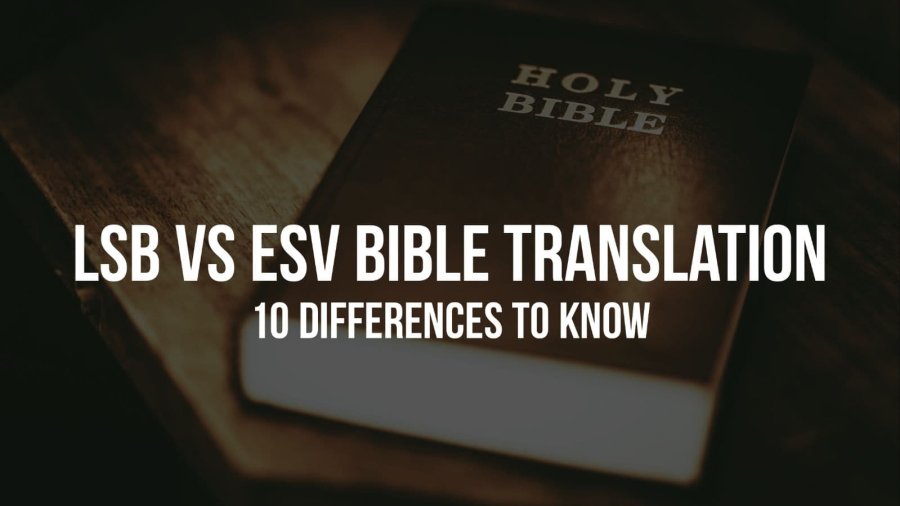The Legacy Standard (LSB) and English Standard Bible (ESV) are two different Bible translations that are popular today. They are similar but different in how they were translated from ancient manuscripts. You may be curious about how these two translations came to be, how they contrast each other, and which translation you should choose. Here are some facts about these two translations that may help you understand them better.
Origins
It’s important to remember that every English Bible has been translated from Hebrew, Greek, and Aramaic. These translations require interpretation, and even today, Hebrew and Greek scholars are still working to determine the exact meaning of each word or phrase of the ancient manuscripts. That being said, there are many reliable translations of ancient Hebrew and Greek texts to ensure accuracy. The English Standard Bible and the Legacy Standard Bible fit into these categories.
ESV
This Bible translation, first published in 2001, is word-for-word, literal translation similar to the Revised Standard Version. Over one hundred evangelical pastors and scholars helped create to this translation. The goal of this group was to create a Bible translation that was precise and faithful to original texts but with a simplistic style. They hoped this translation would carry the legacy of earlier translations, such as the King James Version(1611), Revised English Version(1885), American Standard Version(1901), and the Revised Standard Version( 1952 and 1971), to future generations.
LSB
The Legacy Standard Bible(LSB), released in 2021, is a new translation of the Bible. It’s not a new translation but an update of the New American Standard Bible (NASB) from 1995. Of course, the NASB has roots in the NASB of 1901 and the Revised Version of 1885. This Bible translation was produced by Three Sixteen Publishing, the Lockman Foundation, and the John MacArthur Charitable Trust. A faculty from the Master’s University and Seminary and a review team of scholars and pastors helped create this translation. The goal of this group was to create a translation as literal as possible, where each phrase and word in English agrees with Hebrew, Greek, and Aramaic grammar and meaning.
Readability
English Standard Bible-The English Standard Bible is written at an 8th-grade level. Some suggest it’s a good choice for public reading, memorization, and study.
Legacy Standard Bible- The LSB’s creators say it’s extremely readable, maintaining a style similar to the New American Standard Bible, from which its roots originate. Its expressions are accurate and consistent, using literal phrases to highlight parallels and metaphors.
Differences in translations
ESV Bible—The translators of this Bible compared each phrase and word in the original Greek, Hebrew, and Aramaic to guarantee an accurate text. It’s considered very good literary quality and accessible to everyone. It’s gender inclusive.
LSB—This is also a word-for-word translation from the original Greek and Hebrew. The translators emphasized precision and accuracy over readability. It used parenthesis to show passages or words that may not be in the original Hebrew and Greek.
Bible verse comparisons
In the beginning was the Word, and the Word was with God, and the Word was God. (John 1:1 ESV)
In the beginning was the Word, and the Word was with God, and the Word was God. (John 1:1 LSB)
For God so loved the world, that he gave his only Son, that whoever believes in him should not perish but have eternal life. (John 3:16 ESV)
For God so loved the world, that He gave His only begotten Son, that whoever believes in Him shall not perish, but have eternal life. (John 3:16 LSB)
For by grace you have been saved through faith. And this is not your own doing; it is the gift of God, not a result of works, so that no one may boast. (Ephesians 2:8-9 ESV)
For by grace you have been saved through faith, and this not of yourselves, it is the gift of God; not of works, so that no one may boast. (Ephesians 2:8-9 LSB)
waiting for our blessed hope, the appearing of the glory of our great God and Savior Jesus Christ, (Titus 2:13 ESV)
looking for the blessed hope and the appearing of the glory of our great God and Savior, Jesus Christ, (Titus 2:13 LSB)
Revisions
The English Standard Bible was first published in 2001. Since then, it’s had several minor revisions, including
- 2007
- 2011
- 2016
The ESV is traced back to the 1971 edition of the Revised Standard Version.
The Legacy Bible was first published in 2021 and has no revisions up to this point.
Target audience
The English Standard Version Bible is popular with Christian denominations and organizations worldwide. It is well suited for public reading, personal study, and memorization. It’s written at an 8th to 10th reading level, so most readers of any age can read it. There is a children’s version for younger readers.
The Legacy Standard Bible’s target audience is believers. It’s written at a 10th-grade level with similar readability to the New American Standard Bible. There is also a children’s LSB for younger readers.
Pastors who use the LSB and ESV Bibles
The ESV Bible is read worldwide. Pastors, scholars, and ministry leaders who use the ESV Bible include
- RC Sproul
- John Piper
- Kevin DeYoung
- Tetsunao Yamamori
- David Platt
- Nancy DeMoss Wolgemuth
- Joni Eareckson Tada
The Legacy Bible is popular with Bible teachers
- Kay Arthur
- Charles Stanley
- Al Mohler
- John MacArthur
Pros and cons
ESV-
Pros:
- It’s a literal translation. The translators’ goal was to use the original text’s wording in the style of each author without losing the original meaning, using their grammar, idioms, and syntax.
- It’s a readable Bible translation written at an 8th-10th grade level.
Cons:
- It uses what many readers consider to be “old-fashioned” language in the style of the KJV, which can be challenging.
LSB
Pros:
- The LSB is considered accurate in its grammar and wording, staying close to the Hebrew and Greek ancient texts.
- This translation is consistent in using keywords and phrases.
- The translators wanted to improve the NASB but maintain its heritage.
Cons:
- Need a page of terms to understand some of the meanings since it doesn’t use modern-day equivalent words.
- It’s not a smooth read or as flowing as some translations.
Study Bibles to choose
The ESV Study Bible was released in 2008 and has become a popular tool. Here are some pros and cons of this study Bible.
Pros
- 20,000 pages
- 50 articles, including notes, charts, in-text maps, and graphs
- A long list of contributing authors and scholars contributed to this study of this Bible.
Cons:
Heavy
Extra large-sized book
Special features of the ESV Study Bible include:
- 40 illustrations
- 200 charts
- 80,000 cross-references
- 15 color maps
- Hebrew and Greek notes
- Paragraph style
- Single columns
- Sewn binding
- 2752 total pages
- Under $50
Legacy Standard Bible
There is no specific LSB Bible study version, but many people suggest this Bible is worthwhile study Bible. Some of its features that make it a good study Bible include
- Good book introductions that include author, context, years, genre, and location.
- Articles on understanding the Bible, how the Bible is divinely inspired, and how to grow in your faith. There are also Christian doctrine explanations and defenses of Christ’s resurrection.
- Charts and timelines
- Color maps
- Concordance
- Reading program
- Pages to write personal notes
Cons of the LSB
- Not specifically a study Bible
- Extremely bulky
- Some complain of having the name of one of the contributors in large print on the front of the Bible.
- Extra wide margins for note-taking may not be for everyone.
- Poor font colors on some pages
Which one should I choose?
Both of these Bible translations would be good choices. So, how do you choose which one is best for you? Here are several tips for choosing a Bible translation.
- Both the ESV and the LSB are good translations of the Bible.
- Both are considered accurate translations of ancient manuscripts.
- Choose the translation that you find comfortable to read and understand.
- If you’re using one of these translations for study, choose the one you find best.
- Ask your ministry leader or pastor about these two translations. Which one do they recommend? Why?
- Look online at Bible verses in both translations. Which one reads the best to you?
Conclusion
Hopefully, this article has addressed our questions about these two Bibles and how they came to be. There are many Bible translations available, and that’s a huge blessing. Today, many people wish they had a Bible to read. As you consider both Bible translations, be sure to pray, asking the Lord to help you choose which is right for you. Do more research on these Bible translations and ask friends for their thoughts. Choosing the LSB or the ESV Bible will undoubtedly help you grow your faith, trust in the Lord, and love for others.

